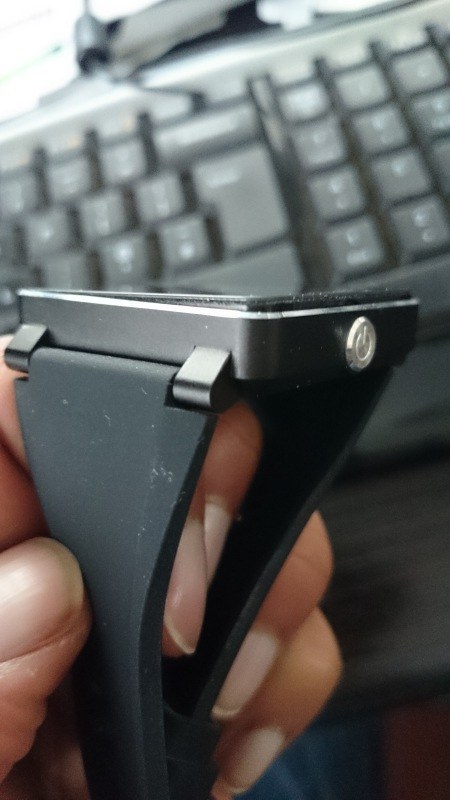NTT Docomo และ au by KDDI ผู้ให้บริการเครือข่ายในประเทศญี่ปุ่นเตรียมวางจำหน่าย Xperia 1 II สมาร์ทโฟนเรือธงที่รองรับ 5G ในช่วงปลายเดือนพฤษภาคมนี้ โดยมันมาพร้อมฟีเจอร์การถ่ายภาพความไว้สูง 20 เฟรมต่อวินาที และ “Photo Pro” แอปกล้องตัวใหม่ และยังได้นำระบบชาร์จไร้สายและรูหูฟัง 3.5 มม. กลับมา เพื่อเติมเต็มสิ่งที่ขาดหายไป
ทาง Engadget Japan ได้มีโอกาสสัมภาษณ์ คุณ Hiroaki Watanabe (渡邊浩彰) และคุณ Sachiko Otani (大谷祥子) จากฝ่ายวางแผนผลิตภัณฑ์ของ Sony Mobile, คุณ Aki Ikeda (池田有基) จากแผนกออกแบบระบบของฝ่ายออกแบบผลิตภัณฑ์ และคุณ Keita Hibi (日比太) ผู้อำนวยการศิลปะของ Creative Center ภายใต้ Sony Brand Design Platform ผ่านทาง video call โดยได้พูดคุยเกี่ยวกับความยากลำบากและแนวคิดต่างๆในระหว่างการพัฒนา Xperia 1 II
หน้าจอมาพร้อมเทคโนโลยี Motion Blur Reduction ที่ให้ผลลัพธ์เทียบเท่า 90Hz
— อะไรคือเหตุผลที่ใส่เทคโนโลยี Motion Blur Reduction ที่ให้ผลลัพธ์เทียบเท่าหน้าจอ 90Hz เข้ามา?
คุณ Watanabe: ตัวเครื่องมาพร้อมหน้าจอที่มี refresh rate 60Hz ก็จริง แต่เทคโนโลยี Motion Blur Reduction จะทำการส่งกระแสไฟฟ้าที่มีแรงดันสูงเข้าไปในช่วงเวลาที่ organic EL (สารอินทรีย์ที่สามารถเปล่งแสงได้เมื่อมีกระแสไฟฟ้าไหลผ่าน) กำลังเปล่งแสงในขณะที่เรากำลังดู ทำให้สามารถสลับไปมาระหว่างภาพได้อย่างรวดเร็ว
ยกตัวอย่างเช่น ที่ผ่านมา มันจะมีปัญหาที่ว่า ถึงแม้คุณจะส่งคำสั่งให้หน้าจอเปล่งแสง แต่มันก็จะยังดูเหมือนสีเทาเมื่อสลับจากสีดำไปยังสีขาว แต่เทคโนโลยี Motion Blur Reduction บน Xperia 1 II สามารถแก้ปัญหาดังกล่าวได้เทียบเท่ากับหน้าจอ 90Hz
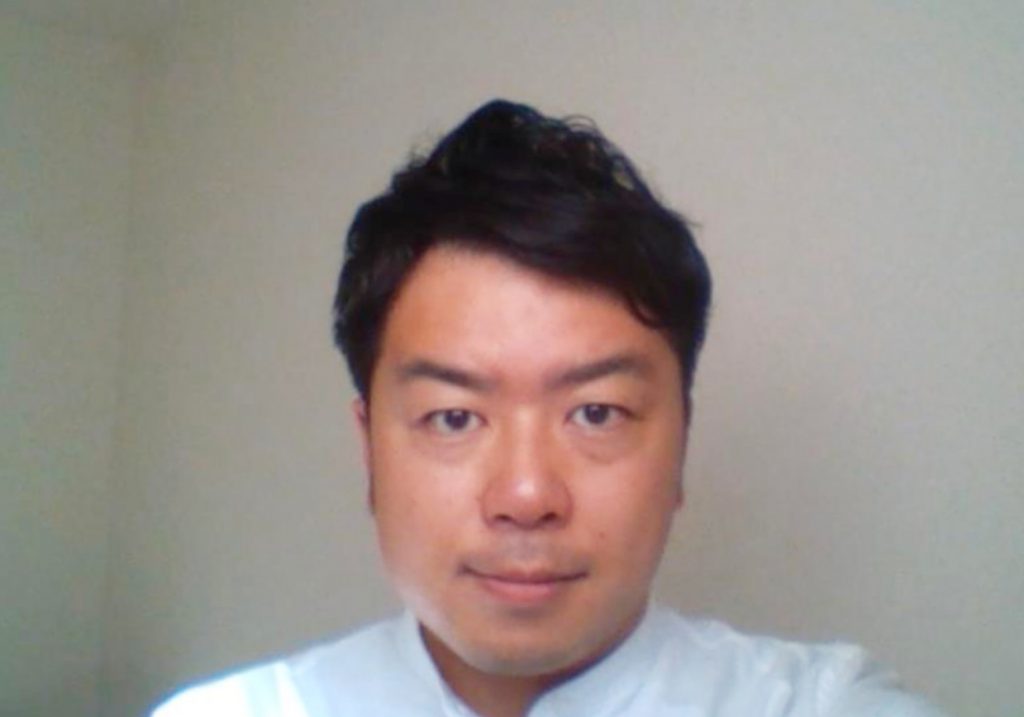
▲ คุณ Hiroaki Watanabe จากฝ่ายวางแผนผลิตภัณฑ์ของ Sony Mobile Communications
— เอ็นจิ้นที่ทำให้ได้ผลลัพธ์เทียบเท่าหน้าจอ 90Hz ทำงานตอนไหนบ้าง?
คุณ Watanabe: ตัวเลือกเปิด-ปิด “Motion Blue Reduction” จะถูกเพิ่งเข้าไปในหน้าตั้งค่าในส่วนของน้าจอ เมื่อเปิดใช้งานแล้ว ฟีเจอร์นี้ก็จะทำงานตลอดเวลา ถ้าจะพูดให้เห็นภาพ ก็คือ ไม่ใช่แค่ตอนที่เล่นวิดีโอเท่านั้น แต่ระหว่างการดูภาพหรือเว็บไซต์ (ปัดหน้าจอไปมา ฯลฯ) ก็ยังทำงานเช่นกัน
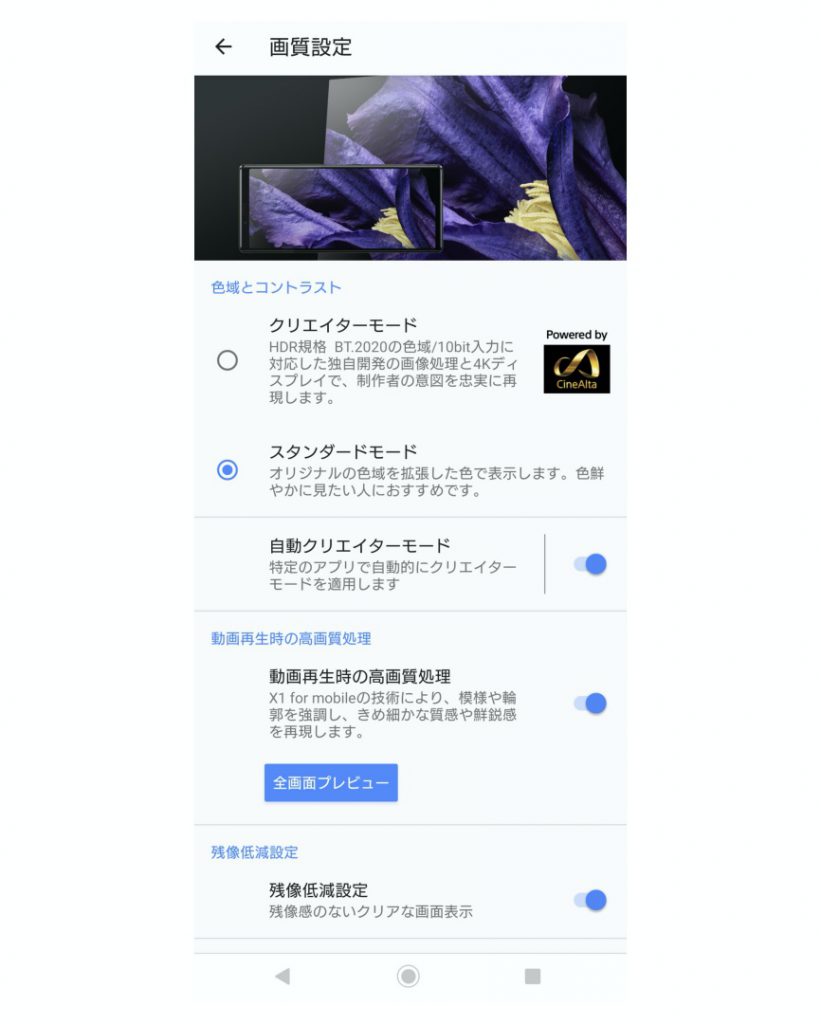
▲ ตัวเลือก “Motion Blur Reduction” (ล่างสุด) ได้ถูกเพิ่มเข้ามาในเมนูตั้งค่าบน Xperia 1 II
หน้าจอ OLED อัตราส่วน 21: 9 ความละเอียด 4K อันคมกริบ
—หน้าจอยังคงเลือกใช้อัตราส่วน 21: 9 ต่อไป ผู้ใช้ Xperia 1 ยังคงชื่นชอบกันอยู่หรือเปล่า?
คุณ Watanabe: ใช่แล้วครับ Xperia 1 ที่เปิดตัวในปี 2019 มาพร้อมหน้าจอ Cinema Wide และนั่นก็เป็นหนึ่งในสาเหตุที่ผู้ใช้เลือกซื้อ เกี่ยวกับอัตรส่วนหน้าจอ 21: 9 นี้ มีผลตอบรับเข้ามามากมาย เช่น เป็นหนึ่งในท็อป 3 เหตุผลในการซื้อ และหลังซื้อไปแล้ว ก็ยังมีกว่า 70-80% ที่ระบุว่าพึงพอใจกับประสิทธิภาพของหน้าจอ
นอกจากผลตอบรับจากผู้ใช้แล้ว พวกเรายังเลือกใช้หน้าจออัตราส่วนนี้ต่อไปเนื่องจากการคำนึงถึงคอนเทนต์และการแสดงผลคอนเทนต์บนหน้าจอ รวมไปถึงความสะดวกในการจับถือ อย่างไรก็ตาม คอนเทนต์ที่ไม่รองรับอัตราส่วน 21:9 ก็อาจจะมีขอบดำปรากฎให้เห็น
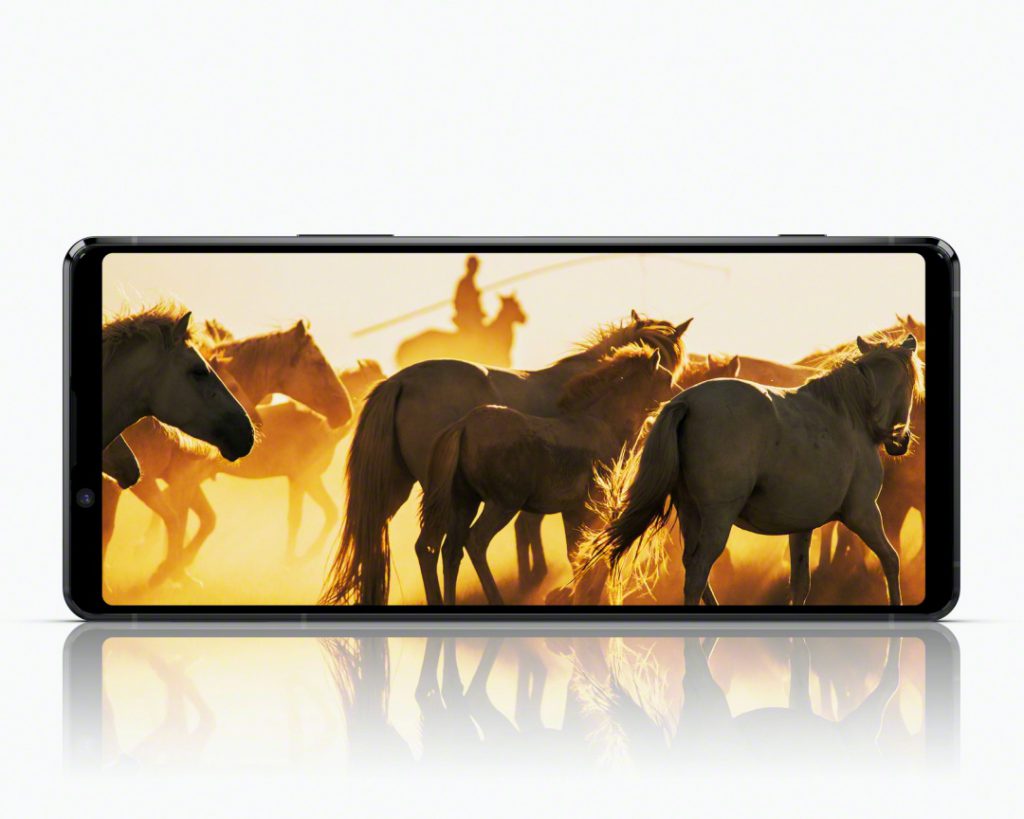
▲ Xperia 1 II มาพร้อมหน้าจอ OLED 4K อัตราส่วน 21: 9
—จำได้ว่าตอนที่ Xperia 1 วางขาย ยังมีแอปพลิเคชั่นที่รองรับอัตราส่วน 21: 9 ไม่มาก
คุณ Watanabe: เรื่องนี้ ผมเข้าใจว่าหลายๆคนกำลังทดลองคอนเทนต์อัตราส่วน 21: 9 กันอยู่ แต่จำนวนที่แน่นอนนั้นทาง Sony Mobile ไม่สามารถระบุได้ อย่างไรก็ตาม พวกเรายืนยันว่า 50% หรือมากกว่าของแอปรับชมภาพยนตร์ รวมถึง Netflix ได้รองรับอัตราส่วน 21: 9 เป็นที่เรียบร้อยแล้ว
—มีแอปเกมอะไรใหม่ๆที่รองรับอัตราส่วน 21: 9 บ้างไหม?
คุณ Watanabe: แน่นอนครับ ในส่วนของเกมก็เช่นกัน เกมแอ็คชั่นยิงปืนใหม่ล่าสุดอย่าง “Call of Duty Mobile” หรือเกมรถแข่งดริฟทอย่าง “Bakusou Drifters” ต่างก็รองรับอัตราส่วน 21:9
มันเป็นเรื่องยากที่จะบอกรายชื่อแอปทั้งหมดที่รองรับ แต่เมื่อเทียบกับปี 2019 (ตอนที่ Xperia 1 เพิ่งวางจำหน่าย) จำนวนของมันก็เพิ่มขึ้นเรื่อยๆ
—ในครั้งนี้ ยังคงใช้หน้าจอ OLED 4K เหมือนกับ Xperia 1 นั่นหมายถึงมันได้รับการชื่นชมจากผู้ใช้เป็นอย่างมาก?
คุณ Watanabe: คอนเทนต์ความละเอียด 4K เช่น บน YouTube กำลังเพิ่มมากขึ้นทั่วโลก ซึ่งแอปกล้องและ Cinema Pro ต่างก็รองรับการถ่ายวิดีโอ 4K ดังนั้นพวกเราจึงเลือกที่จะใช้หน้าจอ OLED 4K ต่อไป เพื่อให้ผู้ใช้เพลิดเพลินไปกับคุณภาพของวิดีโอที่ถ่าย
—ความละเอียด 4K มันส่งผลกระทบต่อระยะเวลาการใช้งานแบตเตอรี่ไม่ใช่หรือ?
คุณ Watanabe: ตามที่ว่ามาเลยครับ ผมก็รับรู้ว่าหลายๆคนก็รู้สึกเช่นกัน ทว่าในครั้งนี้เราได้ติดตั้งแบตเตอรี่ความจุ 4000 mAh เข้ามา ผมจึงคิดว่ามันจะไม่เป็นปัญหาสำหรับการใช้งานในชีวิตประจำวัน
—พวกคุณมีการร่วมมือกับทีมจาก Sony Atsugi Technology Center (ทีมพัฒนากล้องถ่ายทำภาพยนตร์ CineAlta และหน้าจอ Professional Monitor) ในระหว่างการพัฒนาด้วยหรือ?
คุณ Watanabe: ใช่ครับ Sony มีฐานการพัฒนาเทคโนโลยีที่ชื่อว่า “Sony Atsugi Technology Center” ในเมืองอัตสึกิ จังหวัดคานากาวะ พวกเราได้ทำการจูนหน้าจอของ Xperia 1 II ร่วมกับทีมที่พัฒนาหน้าจอ Professional Monitor ที่ราคาสูงกว่า 3 ล้านเยน (มากกว่า 8.9 แสนบาท) โดยใช้หน้าจอ Master Monitor รุ่นล่าสุดที่คาดว่าจะถูกนำไปใช้งานอย่างกว้างขวางในอุตสาหกรรมภาพยนตร์ในอนาคต
สามารถใช้หน้าจอของ Xperia 1 II เช็คโทนสีของงานที่จะพิมพ์
—ช่วยเหล่าให้ฟังหน่อยว่ามีฟีเจอร์ใหม่ๆอะไรอีกที่เป็นเอกลักษณ์ของ Xperia 1 II
คุณ Watanabe: ในส่วนของหน้าจอ นอกจากที่กล่าวไปแล้ว พวกเรายังได้เพิ่มฟังก์ชั่นใหม่ที่สามารถตั้งค่า white balance จากแหล่งกำเนิดแสงมาตรฐานและอุณหภูมิสี หรือก็คือ สามารถกำหนดคาอุณหภูมิแสงขาว (White Point) ได้ด้วยตนเอง เช่น D55 หรือ D65 ซึ่งโทนสีของภาพที่จะพิมพ์ออกมานั้นสามารถแสดงผลบนหน้าจอของ Xperia 1 II ได้อย่างแม่นยำ
—ดูจะเป็นฟังก์ชั่นสำหรับมืออาชีพเลยนะเนี่ย
คุณ Watanabe: ใช่แล้วล่ะครับ มันเหมาะที่จะถูกใช้งานโดยช่างภาพมืออาชีพมากกว่าผู้ใช้งานทั่วไป เพื่อใช้เช็คโทนสีของภาพถ่าย (ที่จะพิมพ์ออกมา) ได้จากหน้าจอของ Xperia 1 II ก่อนที่จะลงมือพิมพ์จริงๆ โดยพวกเราได้พัฒนาประสิทธิภาพการแสดงผลมาเพื่อให้ผู้ใช้ระดับมืออาชีพ เช่น ผู้ที่ใช้กล้องตระกูล “α” ของ Sony พึงพอใจในผลลัพธ์
ในขณะที่บริษัทอื่นๆให้ความสำคัญกับเรื่องการซูม แต่กลับเปิดตัวกล้องที่มาพร้อมฟีเจอร์การถ่ายภาพความเร็วสูง
—ทำไมถึงเลือกใช้เลนส์ของ ZEISS?
คุณ Watanabe: เลนส์กล้องของ Xperia 1 II ได้ถูกพัฒนาร่วมกับ ZEISS ซึ่งเอกลักษณ์ของมันคือสามารถเก็บรายละเอียดของวัตถุ เช่น สีสัน การไล่สี ความโปร่งแสง และความเบลอได้อย่างถูกต้องกับความเป็นจริง
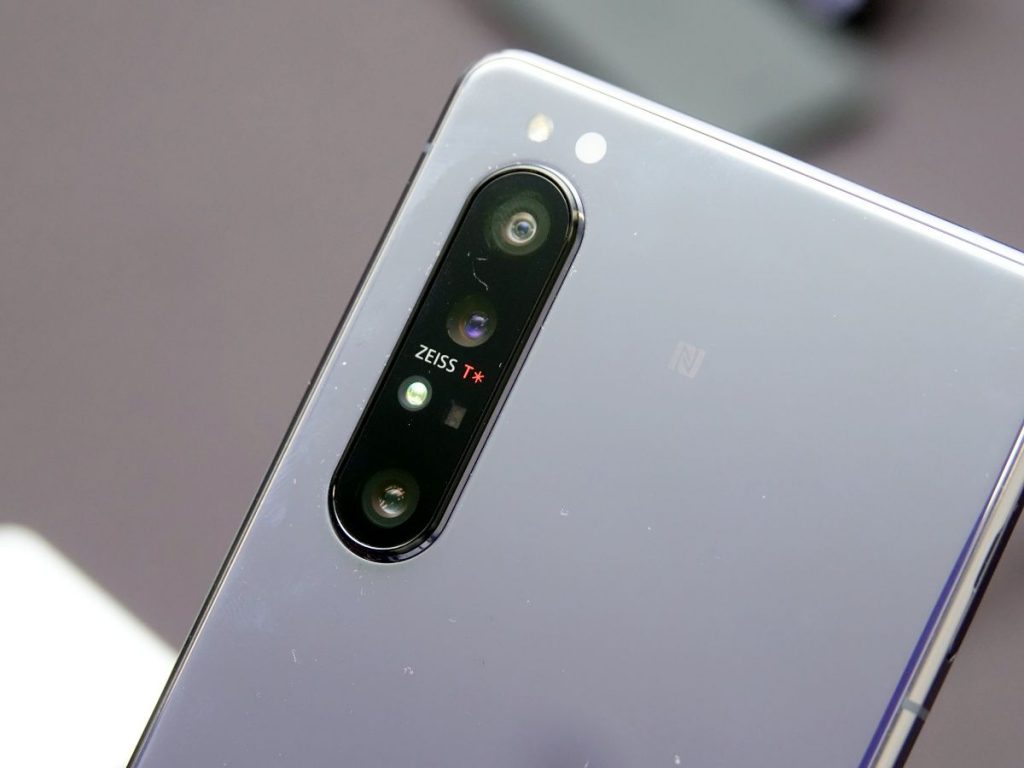
▲ กล้องหลังของ Xperia 1 II ใช้เลนส์ของ ZEISS
นอกจากนี้ มันยังมีโลโก้ “T *” ต่อท้ายโลโก้ “ZEISS” ซึ่งหมายถึงเลนส์ได้ถูกเคลือบด้วยสารเคลือบควบคุมแสงสะท้อน ทำให้สามารถลดแสงแฟลร์ (Flare) และโกส (Ghost) ที่ทำให้คุณภาพของภาพถ่ายต่ำให้เหลือน้อยที่สุด
—การถ่ายภาพความเร็วสูง 20 เฟรมต่อวินาที เป็นหนึ่งในจุดขาย?
คุณ Otani: ในขณะที่บริษัทอื่นดูจะให้ความสำคัญกับเรื่องประสิทธิภาพของการซูม แต่ฟังก์ชั่นกล้องของ Xperia เป็นหนึ่งในสิ่งที่ดิฉันอยากจะให้ความสำคัญเพื่อที่จะผลักดันความเป็น Sony (กล้องระดับมืออาชีพ) ให้ไปถึงระดับสูงที่สุด
ตั้งแต่ช่วงเริ่มพัฒนา Xperia 1 II พวกเราก็ได้ตัดสินใจที่จะใช้เซ็นเซอร์ที่มีประสิทธิภาพความเร็วสูง โดยเมื่อคำนึงถึงสมดุลของจำนวนพิกเซลและประสิทธิภาพ เราก็ได้เลือกเซ็นเซอร์ 12 ล้านพิกเซล และเซ็นเซอร์ชนิด “Dual PD” อย่างไรก็ตาม Dual PD จะอยู่ในเซ็นเซอร์ 16 มม. และ 24 มม. เท่านั้น ส่วน 70 มม. จะเป็น PD
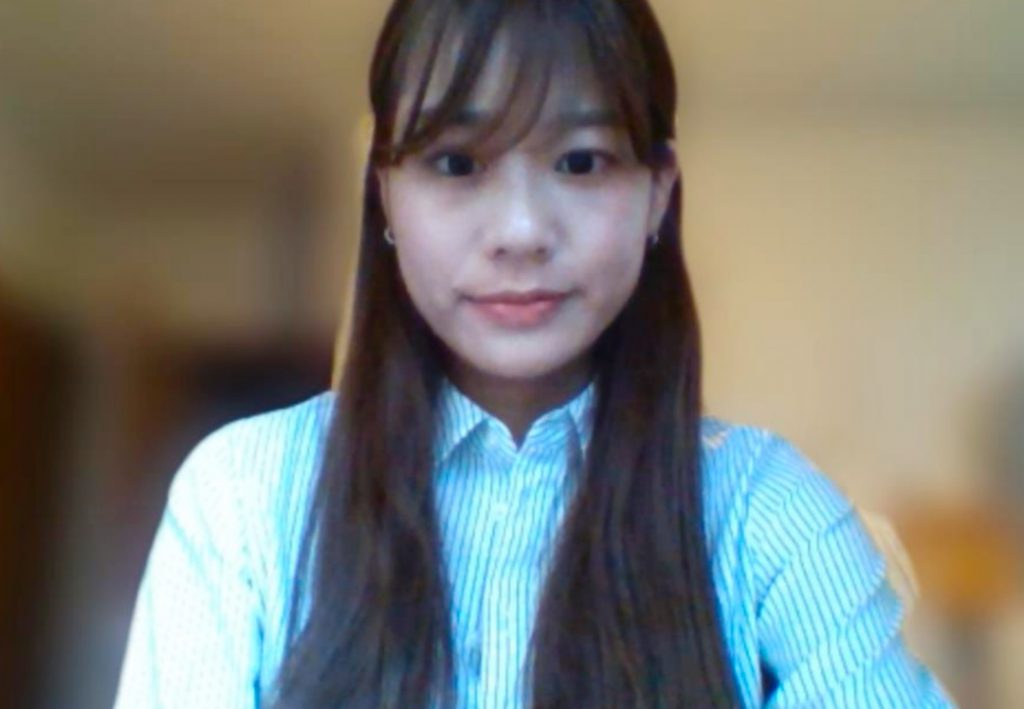
▲ คุณ Shoko Otani จากฝ่ายวางแผนผลิตภัณฑ์ของ Sony Mobile Communications
—Dual PD และ PD มีโครงสร้างและหน้าที่แตกต่างกันอย่างไร?
คุณ Otani: PDAF (Phase Difference AF) คือวิธีที่แบ่งแสงที่เข้ามาในเลนส์ไปยังเซ็นเซอร์ตรวจจับโฟกัส 2 ตัว และพิจารณาหาทิศทางโฟกัสจากช่องว่างระหว่างภาพ 2 ที่สร้างขึ้นมา นั่นทำให้สามารถโฟกัสด้วยความเร็วสูงได้
เซ็นเซอร์ PD sensor has a phase-difference pixel density of 5% of the entire sensor, while the dual PD sensor has a phase-difference pixel density of 100%. In other words, all pixels function as a phase difference AF sensor. This makes it possible to achieve even faster and more accurate AF than the PD sensor.
—ดูเหมือนว่ามันจะเป็นชิ้นส่วนสำคัญที่มีความเกี่ยวข้องกับความสามารถในการถ่ายภาพและโฟกัสด้วยความเร็วสูง
คุณ Otani: ตามที่ว่ามาเลยค่ะ การที่เซ็นเซอร์ Dual PD และ PD ถูกเลือกก็เพื่อให้กล้องมีประสิทธิภาพความเร็วสูง sensor are selected to achieve the high-speed performance of the camera, which is typified by “the world’s first high-speed continuous shooting with AFAE tracking of up to 20 fps”, with the Xperia 1 II.
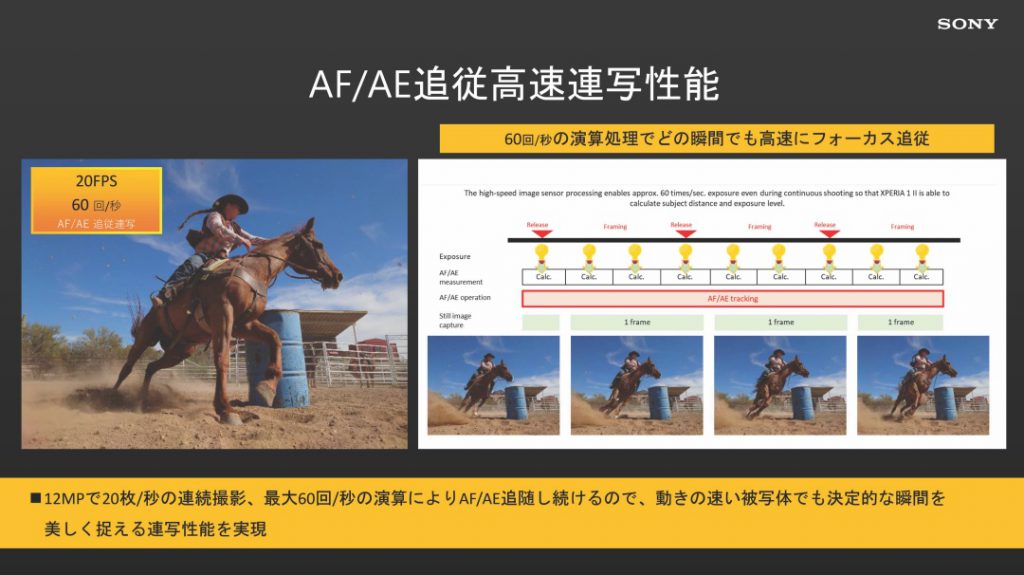
As explained earlier, the Dual PD sensor makes it possible to target high-speed, high-precision AF. However, if the number of pixels becomes higher than this, the readout speed of the sensor will be sacrificed, and there is a high possibility that high-speed shooting and high-speed AF will not reach the level we expect.
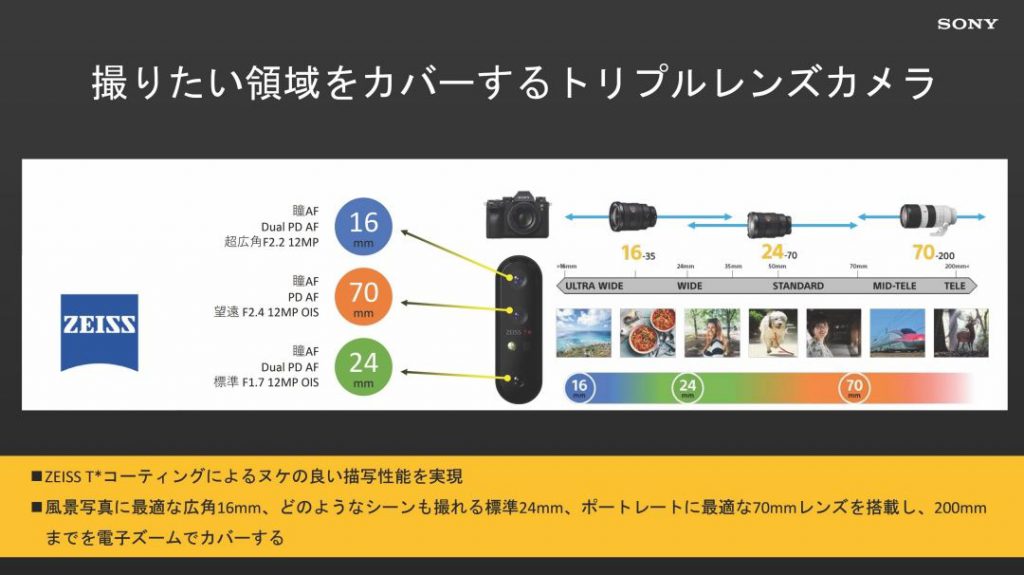
-It’s no wonder that the three cameras are unified into about 12 million pixels.
Mr. Otani: Of course, the above is not the only reason why we have unified to about 12 million pixels. We believe that about 12 million pixels will be sufficient for A4 size print quality as well as for general monitor size monitors.
In addition, by unifying the number of pixels of the three camera lenses to about 12 million pixels, it is possible to prevent the image size from changing by changing the magnification.
–What are the benefits of increasing the size of the image sensor?
Mr. Otani: Since it has a large 1 / 1.7-inch sensor, it can capture more light. You can quickly recognize the subject even in a dim scene. The amount of light received is 1.5 times higher than that of the Xperia 1.
Camera further evolved with “Photography Pro” added with update
-I think the unique camera app “Photography Pro” that will be added in the update is getting a lot of attention from users.
Mr. Otani: Photography Pro has been working to improve usability based on the opinions of professional users who are using the Sony α camera series.
We will consider how to provide a product that accepts them and gives us a sense of usability while receiving feedback of various sizes, from workflows for taking pictures, how to hold the camera, to detailed settings for each one. It was.
In particular, Nick Didlick and Bob Martin and other master photographers have actually used the 20fps continuous shooting function and Eye AF, and we are improving the function based on the feedback we received.
In addition, the Xperia released so far had sufficient camera performance to use smartphones. On the other hand, with the Xperia 1 II, we are not only simply improving the camera performance, but also pursuing functions and operability that are liked by people who like cameras.
-Please tell me the difference between the standard camera app and “Photography Pro”.
Mr. Otani: Compared to the standard camera app for “Photography Pro”, the number of settings that users can change by themselves has increased dramatically, and it is also possible to make detailed manual settings such as changing the shutter speed and exposure. It is a feature of “Pro” only. We also have a wealth of presets for white balance that corrects the effects of light color in the shooting environment.
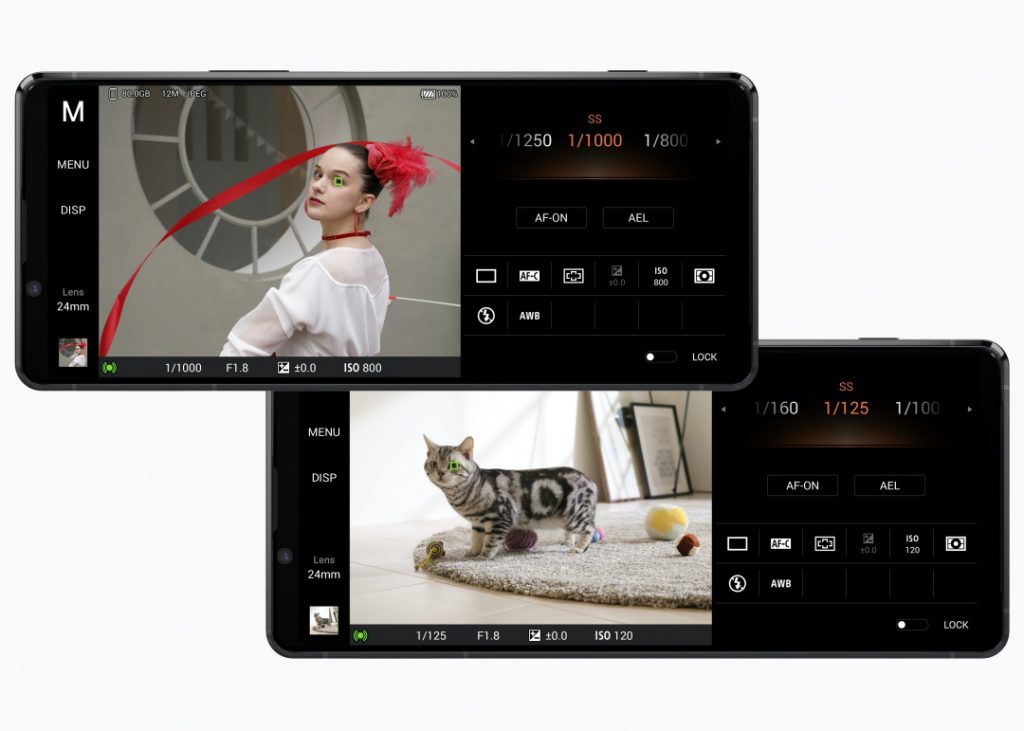
▲ Photography Pro
Not only the UI but also the functions differ between the standard camera app and “Photography Pro”. For example, 20 frames / sec AF / AE following high-speed continuous shooting and real-time eye AF / animal eye AF are only compatible with “Photography Pro”.
-I would like to use “Photography Pro” as soon as possible. Although it is said that the release will be supported by software update, will it be possible to use the photography function with another application until the update?
Mr. Otani: Until the update, it can only be used with the “standard camera app”, and after the update you can select either the standard camera app or Photography Pro.
— Please tell me the reason why “Super Slow Motion Shooting” is not supported for movie shooting.
Mr. Otani: The video performance of the Xperia 1 II is aimed at movie creators such as cinematographers.
During the interviews with the filmmakers and filmmakers who actually film “Cinema Pro,” it was discovered that 4-5 times slower expressions are often used as video works.
At 960fps, there is a disadvantage that slow shooting is not possible for a long time, so we decided that 120fps (shooting at 2K resolution) is sufficient.
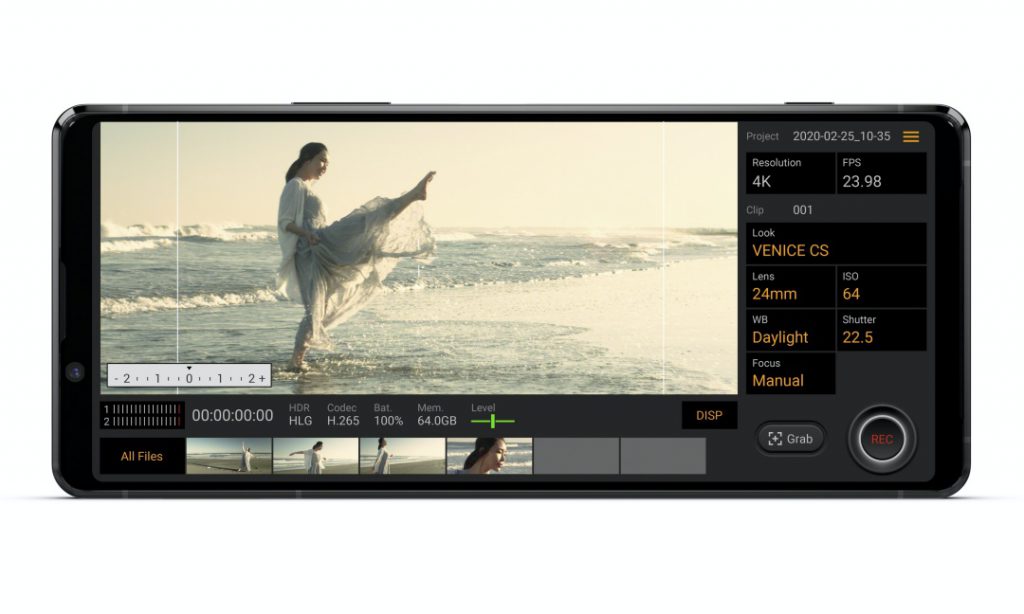
▲ Cinematography Pro
For reference, this is the video of shooting a short film with “Cinematography Pro”. At this time, it was not used because the slow motion function was not installed, but the creator of the video said that he really wanted to use slow in the scene around 7:03.
Taste
360 Reality Audio is expected in the future …
-I was surprised when I heard that Sony’s proprietary stereo sound technology “360 Reality Audio” was installed in the Xperia.
Mr. Ikeda: Thank you. This is because the Xperia 1 II is a high-end model, and at the same time I wanted to actively incorporate the technology of the Sony Group, so I decided to incorporate 360 Reality Audio.
360 Reality Audio is a surround technology for multi-speakers with more than 13 channels instead of 2 channels. In addition to wired earphones, you can watch with wireless headphones or wireless earphones. However, the speaker is not supported at the time of release, so we will continue to consider it.
However, note that there is no servicer in Japan that provides “360 Reality Audio”. Therefore, please note that you cannot immediately experience “360 Reality Audio” after purchasing the Xperia 1 II.
–It was one of the functions I would like to use … Is there a service available overseas?
Mr. Ikeda: Streaming services such as Amazon Music HD, TIDAL, and Deezer are used in Europe and the United States. It is sequentially distributed in a format corresponding to.
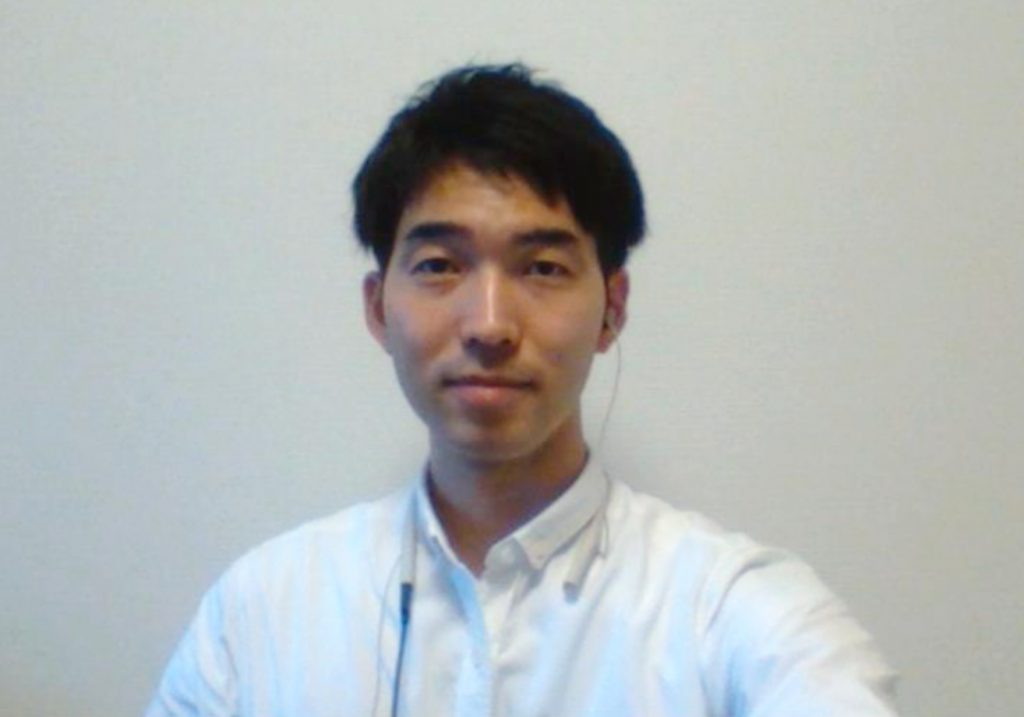
▲ Yuki Ikeda, System Design Department, Product Design Division, Sony Mobile Communications
Reason for earphone jack revival
—- I am very happy about the revival of the 3.5mm earphone jack.
Mr. Ikeda: I decided that the 3.5m earphone jack was not installed when using the “Xperia XZ2″. The reason for this is that improved design was a high priority and wireless was popular.
The reason why the Xperia 1 II is equipped with a 3.5mm earphone jack is that the idea of ”delivering smartphones to people who like them” that followed from Xperia 1 is the same this time (Xperia 1 II). In addition to this, we have determined that it is indispensable, including when watching entertainment content and playing games.
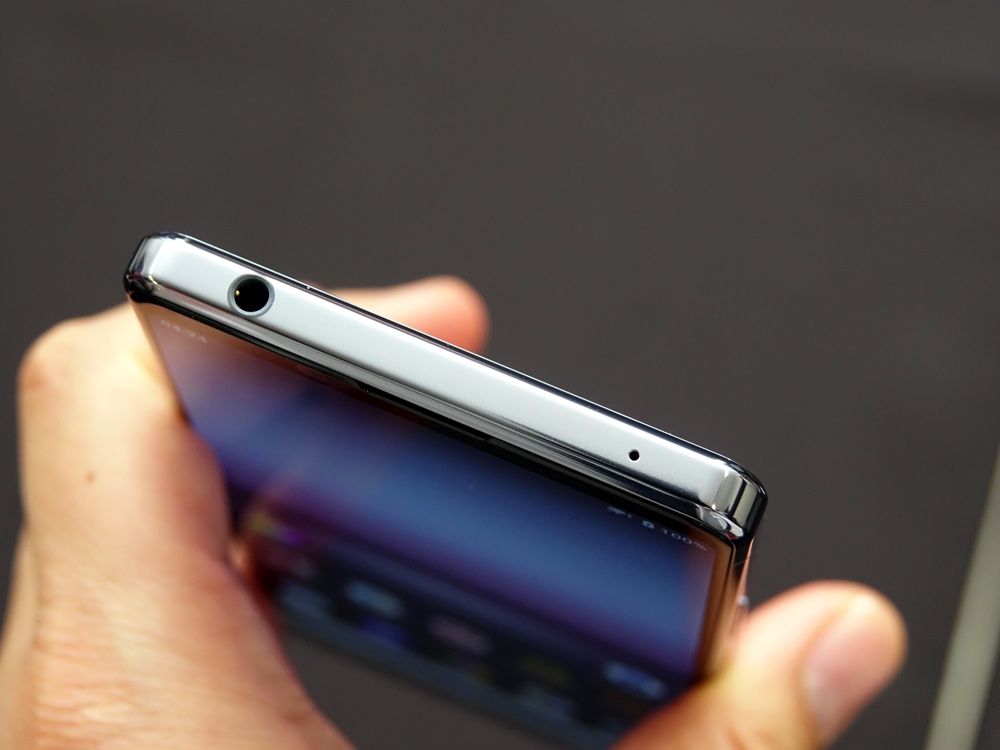
▲ Xperia 1 II has a 3.5mm earphone jack
Wind noise can also be removed. Cameras are not the only ones that have made amazing progress
-Is the sound quality of the speakers improved?
Mr. Ikeda: Of course, there are many. First of all, the speaker parts are new. Attention here is the orientation of the speaker.
One of the speakers on the Xperia 1 was facing the front (user side) and the other was looking sideways. It was processed by software so that it could be heard in a well-balanced right and left, but there was a limit.
On the other hand, the speakers of Xperia 1 II are facing the front on both the left and right, so that the sounds can be heard in a balanced manner from the left and right speakers. Returning the stereo speakers to the front is a disadvantage in terms of screen occupancy. This design has been quite difficult.
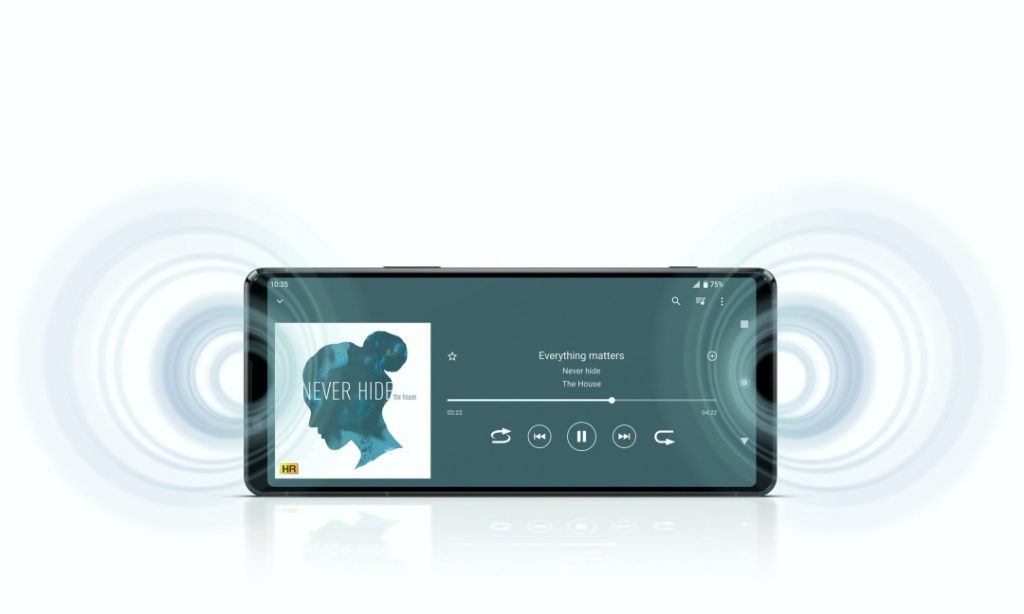
▲ Xperia 1 II front stereo speakers
-The direction of the speaker depends on how you hear it.
Mr. Ikeda: That ‘s right. In addition to the speaker direction, it is also important to increase the volume of the cabinet and to install a more powerful amplifier.
–Please tell us if you have any other ideas for how to hear the sound.
Mr. Ikeda: In Xperia 1, I used to make sounds with Sony Pictures, but I tuned Xperia 1 II based on opinions from Sony Music (people who are active on the front lines). The original sound can be played back without adding flavor to the sound of vocals and musical instruments.
It is also important that the positional relationship (localization) of vocals and musical instruments is correct. If you listen to music through the Xperia 1 II’s speaker, you can see that the sense of localization is correct (sound can be heard from the position intended by the creator).
-When shooting movies, noise such as wind noise may be recorded together. Has this area been improved?
Mr. Ikeda: Of course we are improving. Actually, it incorporates a function to remove extra noise such as wind noise (kazato) picked up by the microphone during recording with software. Wind noise removal is supported by “Cinema Pro”, “Standard camera app” and “3rd party recording / recording app”.
Why is it not compatible with millimeter waves?
-Xperia 1 II does not support millimeter waves. Why?
Mr. Watanabe: 5G radio waves are roughly divided into two, “sub 6” and “millimeter waves”, but sub 6 has the characteristic that it can reach and reach even obstacles, while millimeter waves have high straightness while obstacles are high. It has the characteristic of being weak.
Since the Xperia 1 II is a consumer product, we have determined that it is sufficient to support only Sub 6. The Xperia PRO, which is intended for professional use, will support both sub 6 and millimeter waves.
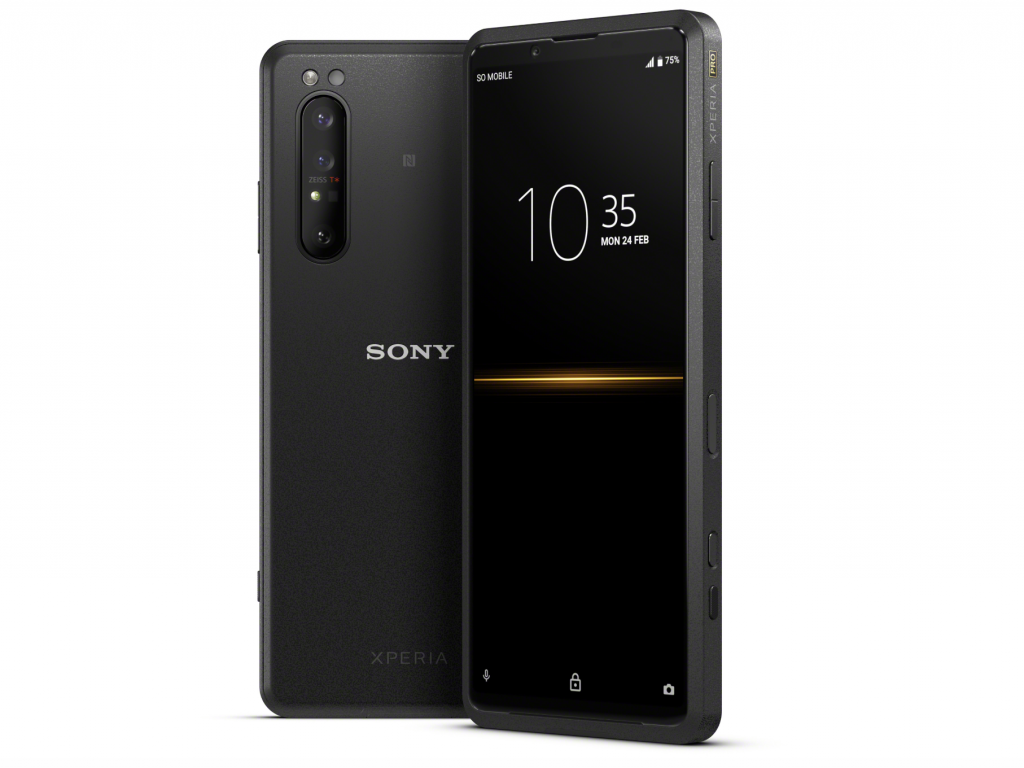
▲ Xperia PRO
Succeeded in 0.3mm thinner than Xperia 1 while supporting 5G and wireless charging
-I expected a 5G-compatible smartphone to grow thicker without permission.
Watanabe: I can’t tell you the detailed method, but I think that if the Xperia 1 II is just a product that inherits the design from the Xperia 1, it will not be accepted.
However, the Xperia 1 has penetrated the 21: 9 ratio, so while inheriting these features, we have also installed a large-capacity battery and fingerprint sensor (which has a high authentication rate).
It was a challenge to design while packing full specs with an audio jack etc. that will increase the thickness, but by reviewing the design of the base and designing it with zero base including internal parts, Xperia 1 (Thickness 8.2 mm) to Xperia 1 II (thickness 7.9 mm).
We are proud that we have designed it so that it can approach the products that Sony users and fans are looking for.
As for heat measures, we have significantly increased the size of the graphite sheet (sheet that diffuses heat) and optimized the layout.
-I am happy that the wireless charging function has returned.
Mr. Watanabe: Wireless charging (Qi) is adopted based on the needs of these days. By improving the efficiency of the board, we were able to install a wireless charging function while maintaining a thin housing without sacrificing thickness.
Material selection is important for the appearance like a single plate
ー ー The purple color of Xperia 1 II is thinner than that of Xperia 1 and has a more subdued tone. Are you particular about color?
Hibi: Regarding the purple color of Xperia 1, we used a bluish dark purple color, with the implication of emphasizing “starting from 1” as the naming of “1” is.
There was talk of adopting similar colors in the Xperia 1 II, but we are trying new things, including the camera and audio functions, so we have reconsidered the colors.
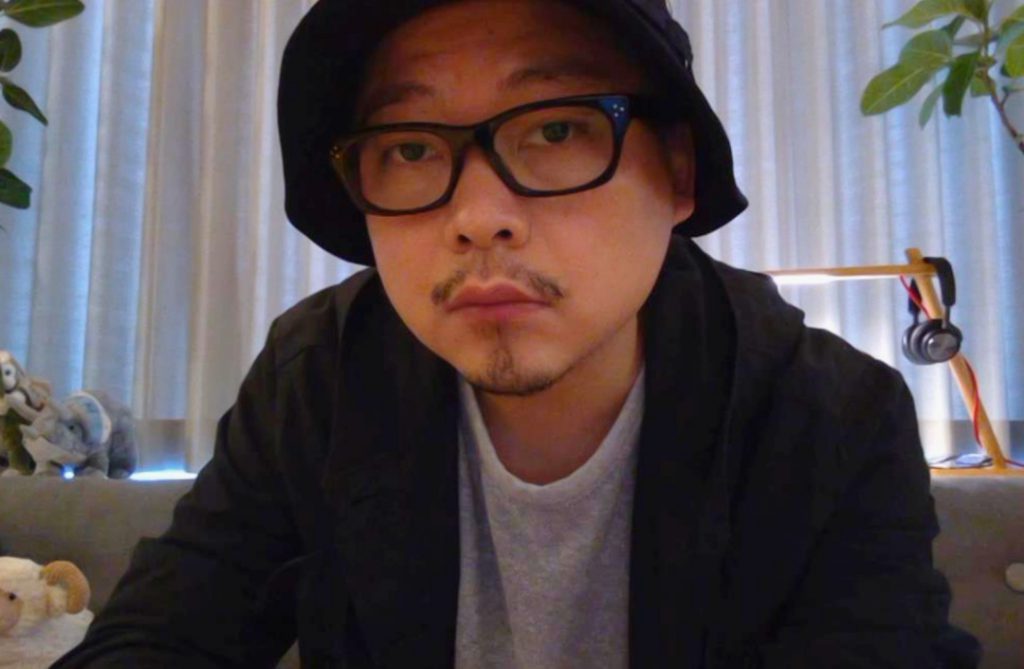
▲ Keita Hibi, Art Director, Creative Center, Sony Brand Design Platform
In recent years, the chrome color (like a mirror) used in the flagship model has been combined with the reddish purple. For this reason, depending on the ambient light, it may be gray or reddish, or may appear maroon or gray.
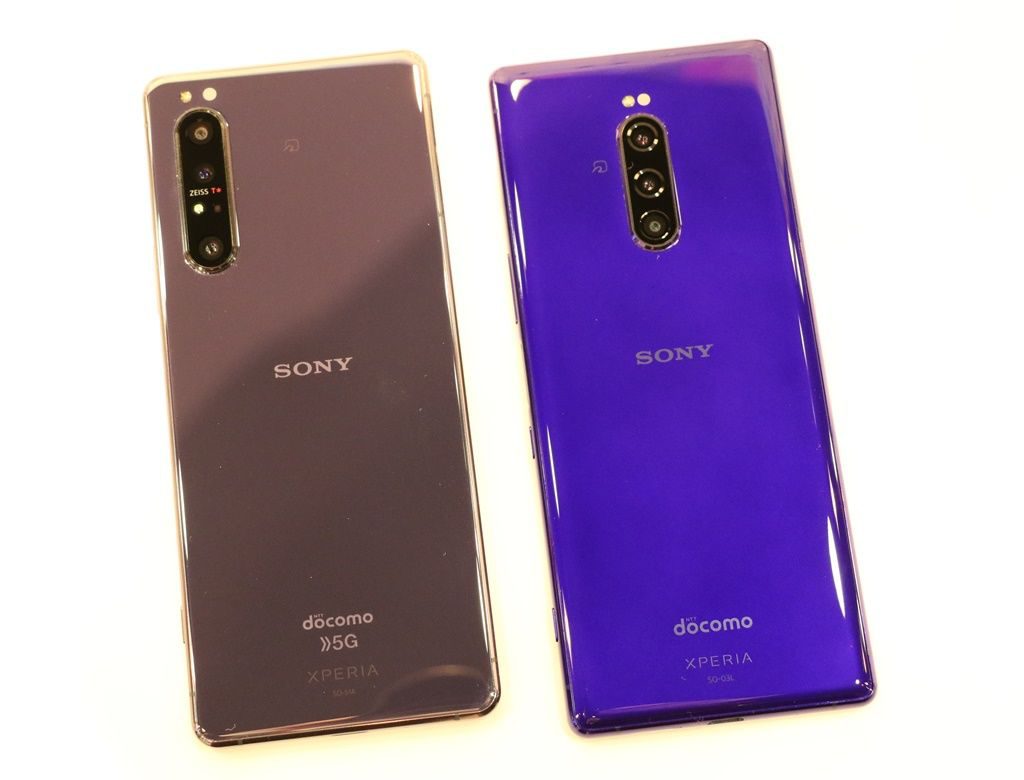
▲ Xperia 1 II (left) and Xperia 1 (right) The back of Xperia 1 II is mirror-finished, especially purple looks maroon and gray.
-The design of Xperia has been called “one beautiful board” among fans, but I think that the reason why it looks beautiful is not only the color but also the choice of material.
Hibi: Xperia 1 II uses “Gorilla Glass 6” from Corning, which has high strength, but the back is made of a color glass material that emphasizes the mirror-like feeling by reflecting light. ..
In order to create a sense of unity with the front, back, and sides of Xperia, the processing of the metal frame and back is different for all three colors of purple, black and white.
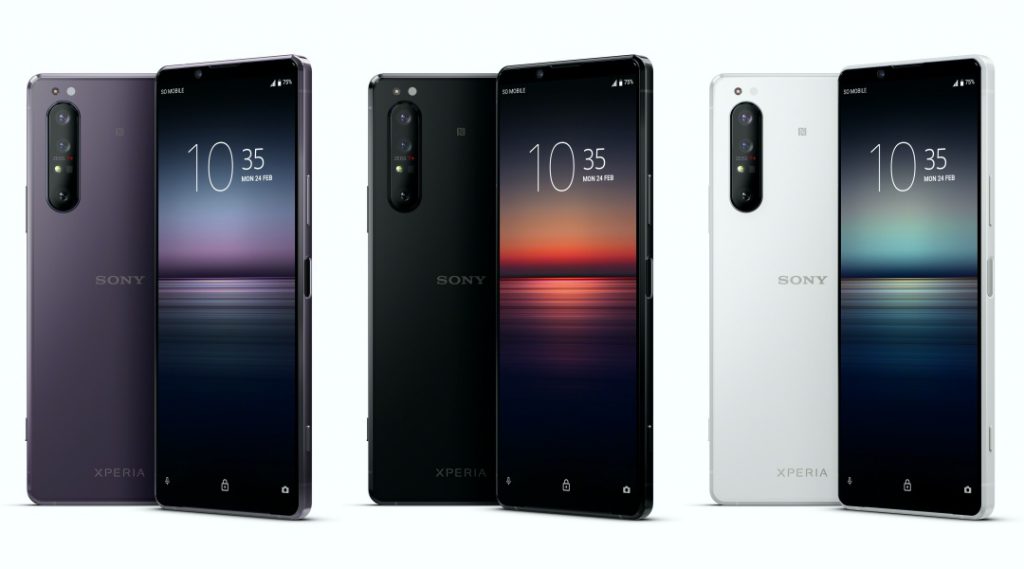
▲ Xperia 1 II purple, black, white
The purple metal frame has a slightly glossy finish so that the reflection of light enhances the mirror surface feeling, and the black and white are designed so that the boundary between the back and the metal frame is not visible.
It was difficult to match the back side and the side, but especially the white metal frame has a metal coating on the back so that the whiteness remains as much as possible among the metals.
ที่มา: Engadget Japan
- ประทับใจสุดๆ
- ดีจังเลย
- โกรธสุดๆ
- เฉยๆ อ่ะ
- รู้สึกหดหู่
สาวกอารยธรรมผู้คลั่งไคล้ทุกสรรพสิ่งที่ติดโลโก้ SONY.









